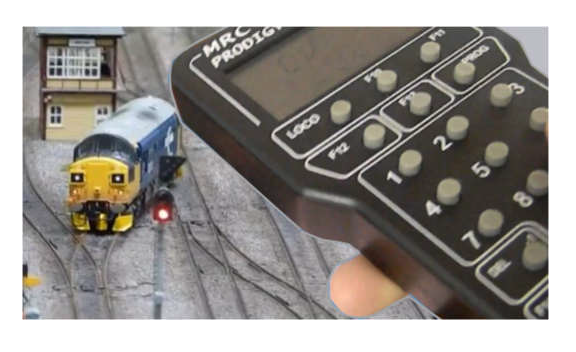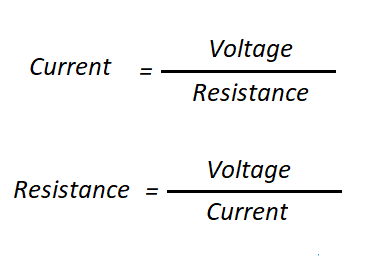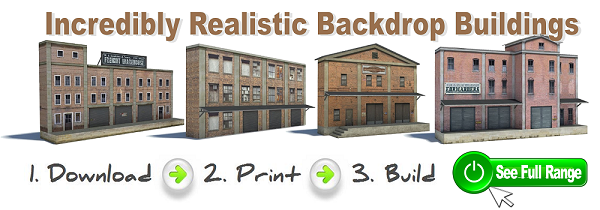Mixing DCC Components on a Model Train Layout
NMRA standards have made system interoperability very convenient. Mixing DCC components from NCE, Digitrax, Lenz, and others is usually a matter of hooking up the wires and programming decoders from the handheld throttle (if there is one). Stationary decoders for turnout control are programmed in the same fashion as mobile decoders, but have fewer parameters to set. About all you need to do is give it an address and away you go. Moreover, the decoder(s) can be placed anywhere there is enough space to comfortably fit it. Closest to the turnout is best, of course, so the wiring is short and neat, but you could even stack them in a rack in the next room (why you would want to do this is a mystery!) if you wished.
© Copyright http://www.modelbuildings.org All rights reserved.

Turnout Machines and Decoders
There are a couple of features that you need to consider when obtaining turnout machines and decoders to operate them. First, just how many turnouts do you plan to control with DCC? Not every turnout on the layout will necessarily need to be remotely controlled. If you are using walk-around throttles, it might be just as convenient and a lot less expensive to control sidings and short branch line trackage with manual turnout throws. On the other hand, if you are doing realistic operating sessions with a central dispatcher at a console, equipping as many turnouts with DCC remote control may be a necessary feature. For most layouts, some combination of the two is likely to be the most appropriate application.
Stationary decoders that are only used for turnout control usually have from one to eight outputs. Servos, turnout machines, and solenoid coils all have different output current requirements, and some decoders can only operate one type of switch machine. You’ll have to shop carefully – keep in mind that more features typically translates to higher price on the order sheet. Also keep in mind that you may need to power the decoder from an independent source, and for each decoder that requires that, you’ll have to plan the power consumption from that source.
Most companies that sell DCC controllers and boosters also have a complete line of both stationary and mobile decoders. If you can afford it, sticking with the same manufacturer insures the most compatibility and the greatest range of features and capability. If you are taking a more frugal approach to your layout, take the time to do careful research and choose decoders based on just that set of features you REALLY need.
Expand Your Electrical Repertoire
Getting a model railroad in operation requires some basic knowledge of electricity. If you are interested mostly in construction of scenery or prototypical operating sessions, or superdetailing of rolling stock, this is perfectly fine. On the other hand, combining model railroading with learning electricity and electronics at a more advanced level will open up a whole new world of fascinating possibilities on the layout. Remember, we are interested in realism, and what is more realistic than a miniature world that has the same kind of movement as the real thing?
As this is a discussion of turnouts and train movement, we won’t dwell on additional motion features that electronics can bring to the layout. Instead, we’ll focus on how a little more advanced knowledge and a few inexpensive parts can give you capability beyond what you can buy off the shelf.
First, it is necessary to understand a little more about electricity than “red is positive, black is negative”. If you spend a day or two with Google and the subject “basic electronic theory”, you will become familiar with both widely used electronics terms and the application of the most basic electronic theory known as Ohm’s Law. Ohm’s Law describes the relationship of voltage, current, and resistance in electric and electronic circuits, and is truly the foundation of everything else you might ever learn about electronics. It’s just multiplication and division, so no advanced math skills are necessary to use it. This is it:

Voltage = Current x Resistance
Second, you’ll want to develop a relationship with your computer that goes beyond gaming, email and Facebook. Controlling a layout of any size is much easier with computer assistance, and each layout and its owner is a little bit different. The ultimate reconfigurable machine, the programmable computer, fits that need perfectly! It can function as both an interface to train operation and as a tool to configure other computers to do simple tasks. How it does this is through programming.

You don’t need to jump into the deep end of the programming pool right away. A few principles are all you need to prepare you to implement devices known as “microcontrollers” on your layout. In fact, if you are a DCC operator, you already do. Every decoder at its heart is a microcontroller. They have specialized programming that runs invisibly to perform whatever function is required. When you configure a mobile decoder to operate the lights or set the throttle range or create a consist you are modifying that programming.
Microcontroller programming is simpler because a microcontroller is being instructed to do a very limited set of functions. For example, an Arduino can turn on a lamp with one simple instruction:
digitalWrite(pin, HIGH);
Total gibberish, right? Let’s take it apart to make it simple:
The instruction has three parts. The digitalWrite part is what is telling the controller what to do.
Computers receive information with instructions like INPUT or READ, and they send information with instructions like OUTPUT or WRITE. In this case, the controller is sending out a digital (one level) signal.
The second and third parts are contained within the parentheses: (pin, HIGH). In the configuration of this controller, there are several input/output pins that can be used, and the term “pin” indicates which of those is to be used in this instruction. “HIGH” indicates that the controller is to place a positive voltage on that pin. Other functions have similar constructions just as easily created. Referring to the Arduino microcontroller again, there is free software that allows the microcontroller to be loaded with new software easily and quickly. And the software is free!
Microcontrollers are cheap. Really cheap
A useful Arduino Nano microcontroller can be had from Internet sources for under $5. “OK”, you ask, “how do I use this?” With some free software and a few pennies worth of other components, you can create your own stationary decoders with as much capability as you need at a fraction of the cost of the commercial units.
Recommended resource http://www.modeltraincontrols.com
In fact, you can use the same controller to do other functions such as lighting effects, and even change your mind and reprogram it to do something entirely different. If you don’t believe it, try a Google search for “Arduino use in model railroading”. There are hundreds of web pages describing all kinds of Arduino microcontroller model railroad projects. There are other types of microcontrollers as well, such as the Picaxe and BASIC Stamp, but the Arduino is by far the most popular today.
A word of caution. You might find that computer programming is highly addictive. If you are early enough in your career, it might change your life. There are thousands of opportunities for software engineers all over the world. Your hobby could lead to a lifelong vocation!

